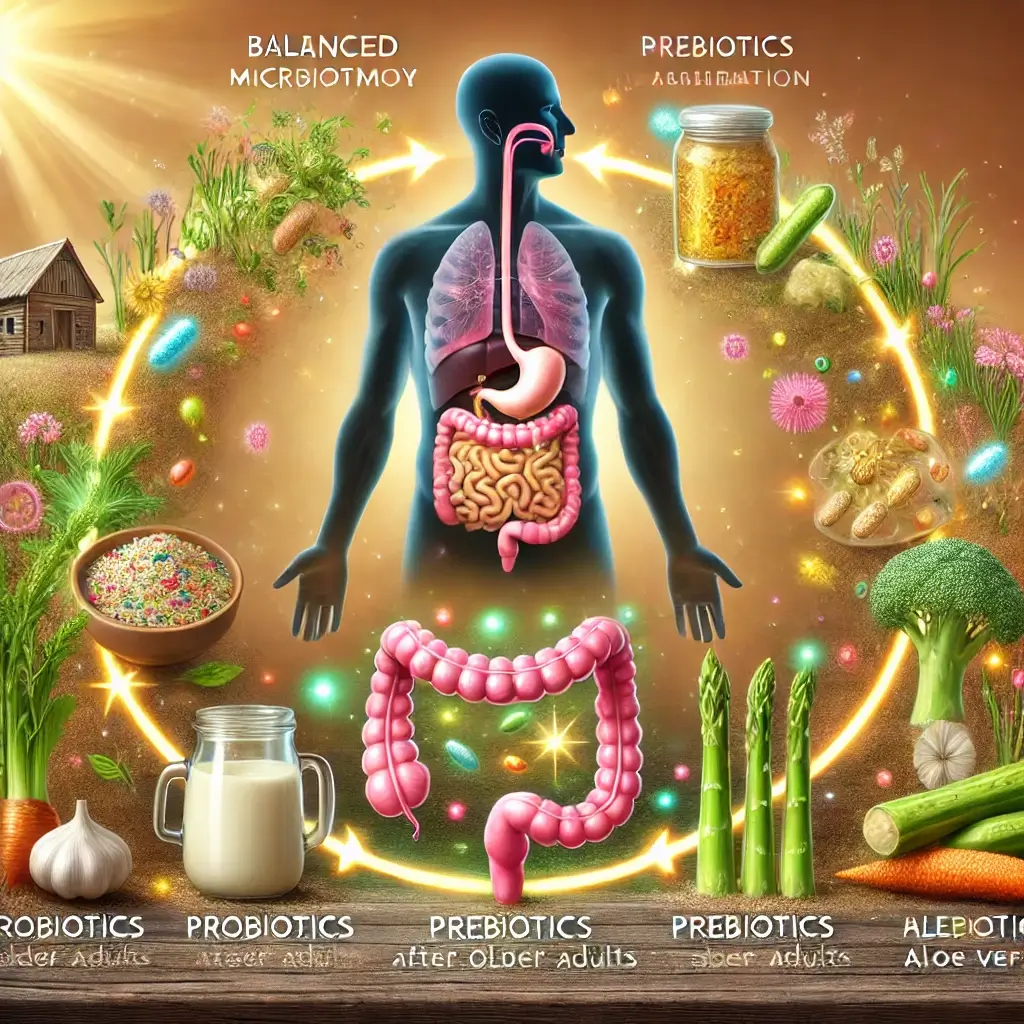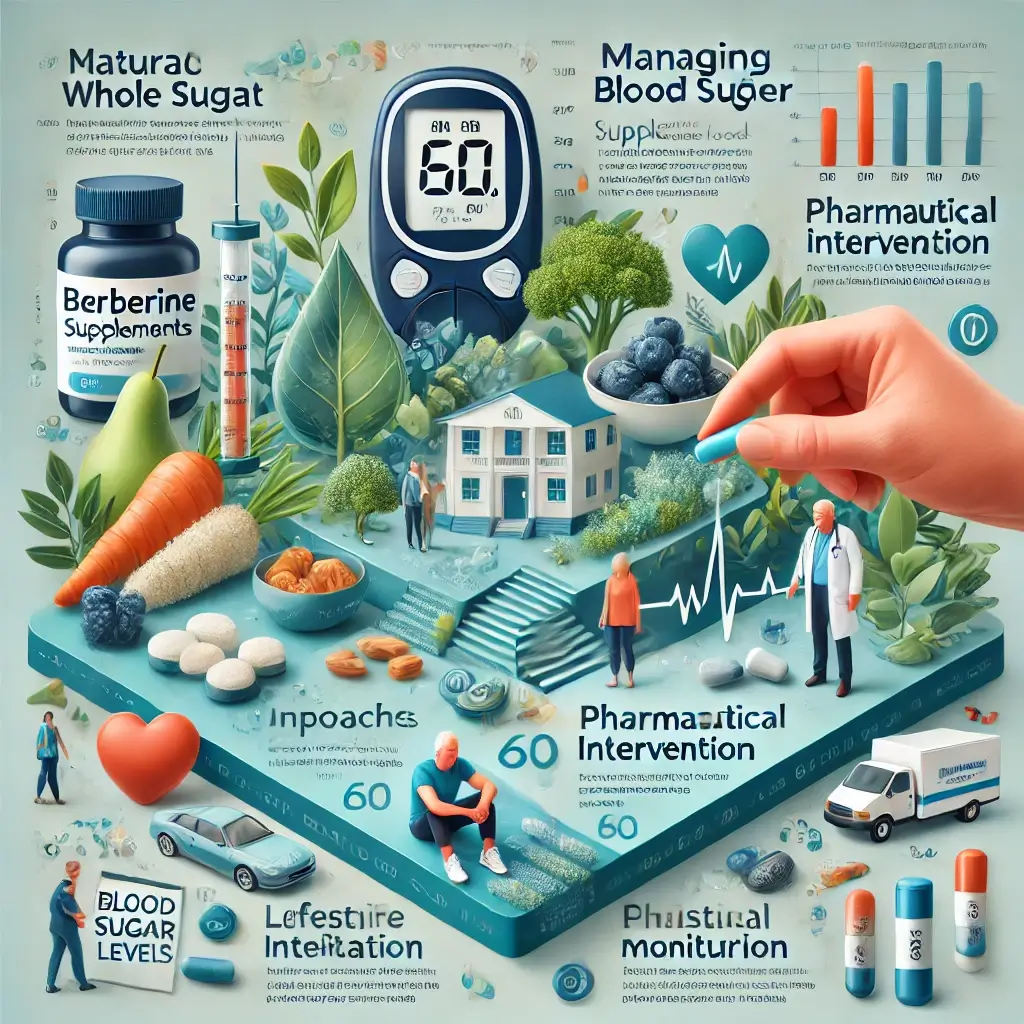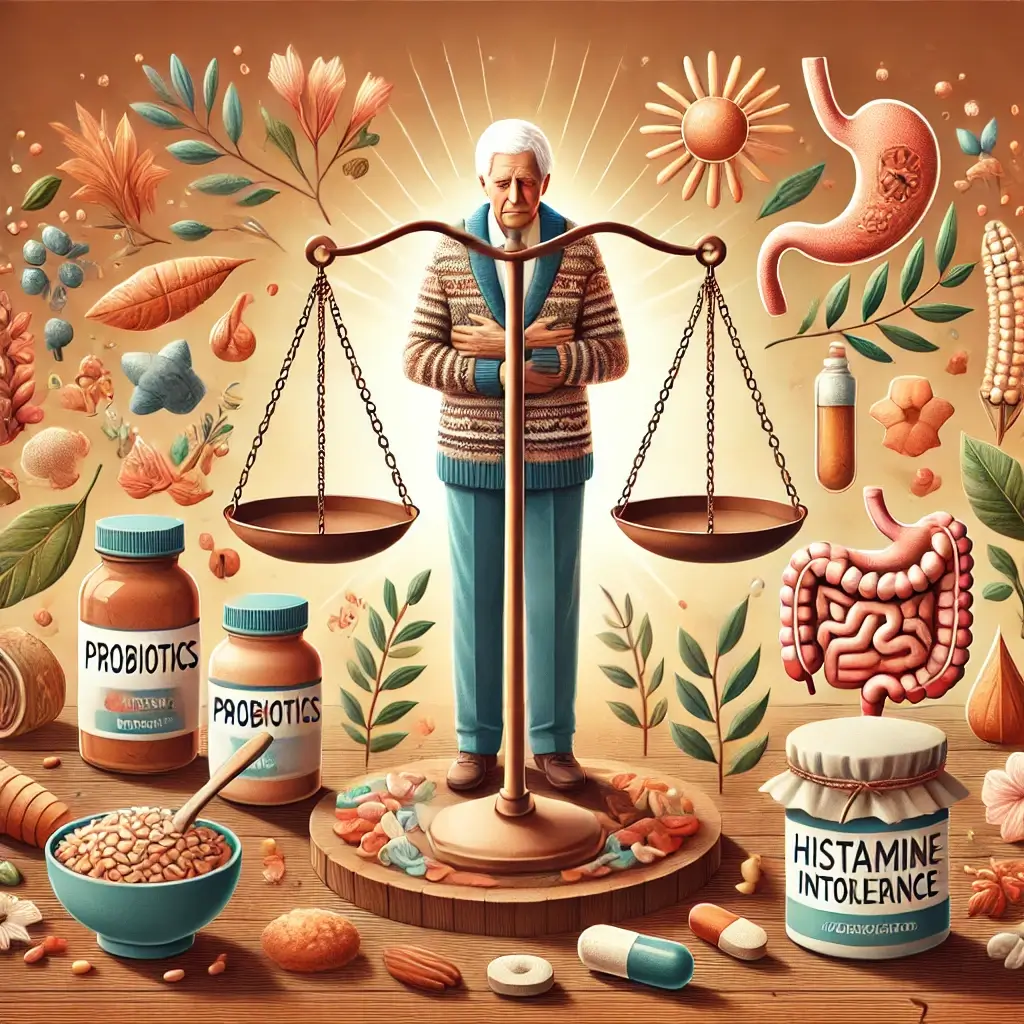Essential Recovery: Why Older Adults Need Specialized Gut Care Post-Antibiotics
The Impact of Aging on Gut Microbiome
As the body ages, its ability to maintain a resilient gut microbiome diminishes, making older adults particularly vulnerable to disruptions caused by antibiotic use. Antibiotics, while essential for eradicating infections, often lead to significant imbalances in gut flora. These imbalances can manifest as digestive disturbances and weakened immune responses, and increased susceptibility to chronic conditions. Recovery from such disruptions requires a targeted and comprehensive approach that addresses both the immediate aftermath of antibiotic use and the long-term health of the gut microbiota.
Research Progress in Gut Health
Research into gut health has uncovered promising interventions tailored to the unique needs of older adults. These strategies leverage the synergy of probiotics, prebiotics, and herbal remedies to rebuild microbial diversity and restore intestinal integrity. Furthermore, dietary modifications and precise supplementation ensure a holistic approach to recovery.
Introduction to Recovery Protocols
This article delves into advanced protocols for post-antibiotic gut recovery in older adults, offering evidence-based insights into effective strategies for long-term gastrointestinal health.
Strategic Recovery Protocols Overview
Strategic Recovery Protocols
Phase 1: Initial Recovery Steps
The initial recovery period is critical for mitigating the immediate impacts of antibiotic therapy. The goal is to reduce inflammation and replenish beneficial gut bacteria.
Probiotic Intervention Strategy
Probiotic Interventions:
Saccharomyces boulardii: A powerful yeast probiotic that prevents diarrhea and pathogenic overgrowth, dosed at 5-10 billion CFU daily.
Lactobacillus rhamnosus GG: Promotes gut barrier integrity, taken at 10-20 billion CFU daily.
Bifidobacterium infantis: Supports immune modulation, at 5-10 billion CFU daily.
Essential Nutritional Support
Nutritional Support:
L-Glutamine: Facilitates the repair of the gut lining, dosed at 3-5g daily.
Zinc Carnosine: Reduces inflammation and promotes healing, taken at 75-150mg daily.
Vitamin C: An antioxidant that supports immune recovery, dosed at 500-1000mg daily.
Phase 2: Microbiome Restoration
This phase focuses on diversifying gut bacteria and strengthening the intestinal mucosa to ensure resilience against future disruptions.
Advanced Probiotic Protocol
Probiotic Diversification:
High-potency, multi-strain probiotics, providing 30-50 billion CFU daily.
Soil-based organisms (SBOs) like Bacillus coagulans, taken at 1-3 billion CFU daily.
Herbal Support for Mucosal Health
Mucosal Support Herbs:
Aloe Vera: Enhances gut healing and reduces irritation, dosed at 100-200mg daily.
Slippery Elm: Coats the intestinal lining and soothes inflammation, taken at 500-1500mg daily.
Deglycyrrhizinated Licorice (DGL): Supports mucosal integrity, dosed at 400-800mg daily.
Prebiotic Integration Strategy
Prebiotic Integration:
Foods rich in prebiotics, such as asparagus, garlic, and chicory root, to feed beneficial bacteria.
Phase 3: Maintaining Gut Health
After restoring initial balance, maintaining gut health involves lifestyle adjustments and ongoing supplementation.
Fermented Foods Implementation
Fermented Foods:
Incorporate kefir, yogurt, and fermented vegetables to naturally sustain beneficial bacteria.
Enhanced Nutritional Protocol
Nutritional Enhancements:
Omega-3 fatty acids: Reduce systemic inflammation and support gut health.
Polyphenol-rich foods: Green tea and berries promote beneficial bacterial growth.
Current Research Developments
Recent studies provide deeper insights into effective gut recovery strategies for older adults:
Research Findings Overview
Thompson et al. (2023) demonstrated the synergistic effects of combining probiotics with prebiotic fibers, showing improved gut integrity and microbial diversity in seniors.
Anderson et al. (2023) emphasized the importance of soil-based organisms in restoring gut resilience post-antibiotic therapy, particularly in older populations.
Wilson et al. (2021) investigated the role of herbal therapies like slippery elm and licorice root, confirming their benefits for mucosal healing and inflammation reduction.
Research Implications
These findings underscore the importance of a comprehensive, phased approach that integrates traditional wisdom with modern science.
Final Considerations
The path to gut recovery after antibiotic use is particularly complex for older adults, requiring a multifaceted strategy that goes beyond standard probiotic supplementation. By incorporating phased interventions that address immediate, intermediate, and long-term needs, practitioners can help seniors rebuild a robust and diverse microbiome. As research in microbiome science continues to evolve, personalized recovery plans will become increasingly precise and effective, ensuring better outcomes for aging populations.
Research References
References
Anderson, M. B., et al. (2023). Post-antibiotic microbiome restoration in aging populations. Journal of Gerontology, 78(4), 567-581.
Thompson, R. K., et al. (2023). Probiotic interventions in elderly gut health: A systematic review. Beneficial Microbes, 14(3), 234-248.
Wilson, P. A., et al. (2021). Natural approaches to gut restoration following antibiotic therapy. Journal of Alternative and Complementary Medicine, 27(6), 478-492.













